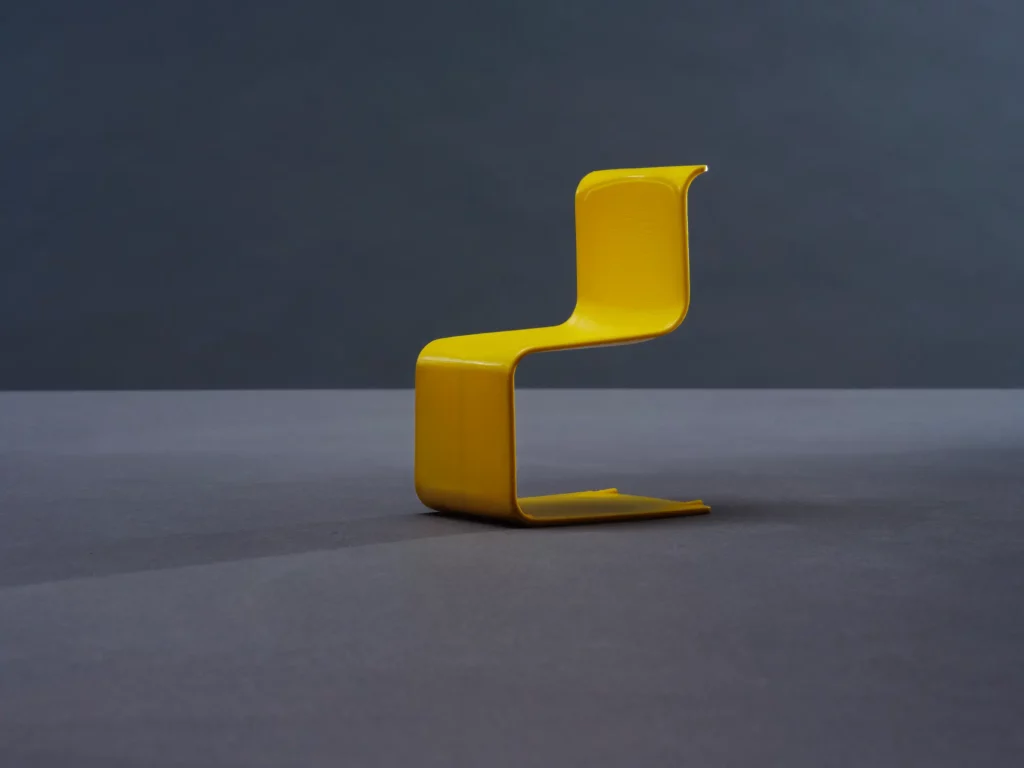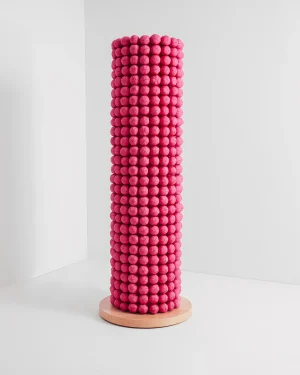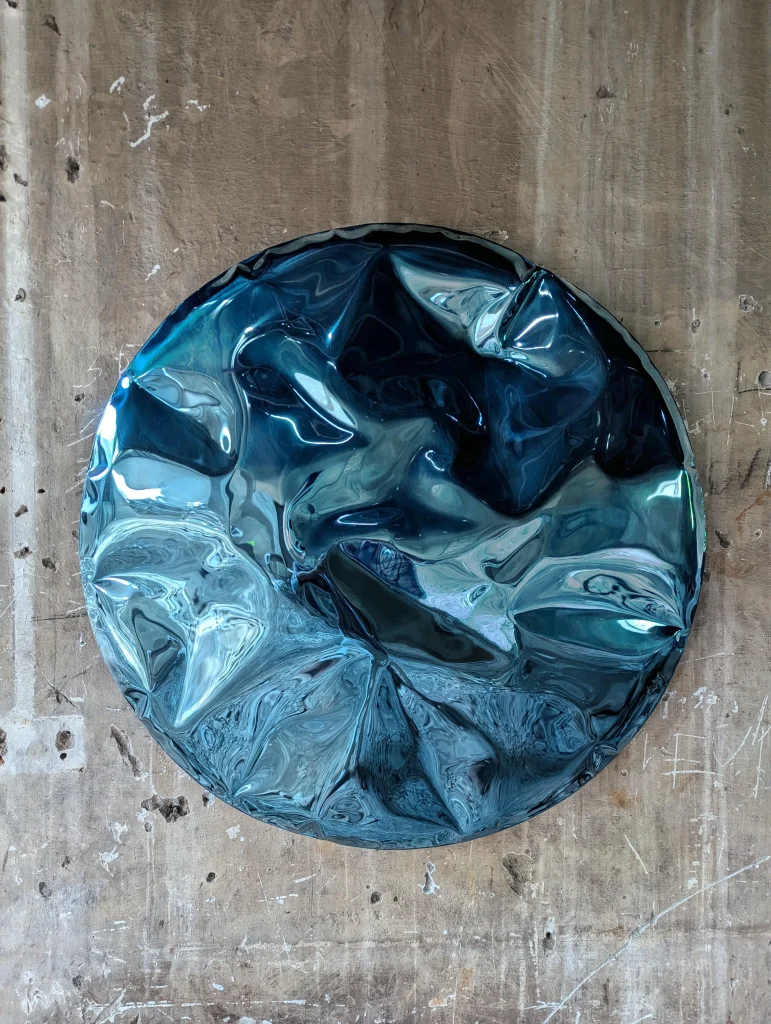
Embracing Barbiecore Interior Design: A Dollhouse Renaissance
Born from an era of vibrant pop culture and the collective imagination of millions of young girls, Barbiecore, with its iconic blend of pink extravagance and vintage charm, has been brewing in the background for decades. To understand the Barbiecore trend, we must first understand its origins.
Barbie, the iconic fashion doll, was launched by Mattel in 1959 and has since shaped and mirrored societal trends and ideals. Barbie’s dollhouse, the epitome of Barbie Interior Design, evolved alongside her, reflecting changing perceptions of style, elegance, and femininity over the years. From the bold colors and patterns of the 60s to the muted sophistication of the 90s, each era imprinted on Barbie’s world, creating an evolution timeline that is both nostalgic and captivating.
A Modern-day Renaissance
In the wake of the new Barbie Hollywood movie featuring Margot Robbie as Barbie and Ryan Gosling as Ken, a sense of nostalgia for Barbie’s stylish world has permeated the zeitgeist, sparking a resurgence in Barbiecore interior design. This aesthetic style, characterized by bold colors, primarily pink, chic patterns, and unique silhouettes, has gained substantial momentum. According to IGN, the Barbie Movie used so much pink paint that it apparently caused an international shortage.






The Barbiecore revival isn’t just about reliving childhood memories. It also speaks to a broader trend of embracing maximalism, finding joy in the bold and the glamorous, and using interior design as a platform for individuality and self-expression. The surge of this trend was also manifested by PIN UP magazine when launching their book “Barbie Dreamhouse” in conjunction with the Barbie brand’s 60-year anniversary. The book studies the interiors of Barbie dollhouses since the beginning, from 70’s retro sofas to Verner Panton-inspired dining chairs.












Barbiecore Meets Contemporary Design
At Adorno, many designers embrace the Barbiecore aesthetic with fervor. Our latest selection of Barbie Inspired Decor & Furniture Design offers a visually stunning tribute to this iconic style, blending nostalgic associations with modern design techniques.




One standout piece is the striking pink “Frame Shaming” chair by Sofie Wallenius with its elegant curvature and pink latex upholstery. The chair is a part of Wallenius’ exploratory project about how furniture can represent our different personalities and appearances. It’s a relevant commentary to the patriarchal structure which has given unattainable goals that are doomed for us to fail. Another highlight is the “Blondie Chair” by Maria Zakioso made of artificial hair, eroded on a pinewood frame. The piece reflects on her experiences during depression and the transformations to her appearance she had to undergo in order to accept herself and her psychological state – a relevant topic considering today’s debates around the Barbie brand and gender norms. These pieces offer a deeply personal take on Barbiecore, marrying nostalgia and memories with social criticism in a sophisticated and playful way. Discover more than 100 pieces that embody the Barbie spirit in our latest Barbiecore selection.
Renowned Interior Designers Embracing the Barbie Style
Sasha Bikoff, known for her bold, eclectic designs, is one of the interior designers leading the Barbiecore resurgence. A proponent of color and maximalist design, Bikoff’s style is not to miss when studying the Barbie aesthetic.


Her recent work at the Kips Bay Decorator Showhouse in New York showcases the modern versatility of Barbie Interiors. A penthouse suite awash in bold shades of peach and pink, accented by chic metallic fixtures and retro-inspired textiles, demonstrates how the Barbiecore aesthetic can be used to create a vibrant, stylish space yet far from childish. The project features work from a plethora of established designers such as Mischa Kahn‘s Lounge Chair, Viktor Udzenija‘s tabouret, and John Pomp‘s metallic statement bed, but also new talent like Nicholas Devlin was invited to contribute his drippy wall mirrors.






Barbie and Societal Shifts: Steering Away from Beauty Norms
The Barbie brand, while loved by many, has also been the subject of critique over the years. Detractors have argued that the brand, with its historically stereotypical representation of beauty and gender norms, might inadvertently promote unhealthy standards, particularly to its young audience.
However, the Barbiecore trend has introduced a new narrative that significantly shifts the focus from beauty standards to creative self-expression, specifically through interior design. By embracing Barbiecore Interiors, we can appreciate the brand’s historical significance and aesthetic influence without reinforcing outdated beauty norms.


Barbie Furniture and Barbie Interior Design symbolize a world filled with bright colors, fun patterns, and bold decisions – concepts that can be liberating and empowering. These aspects of Barbie’s world encourage creativity, individuality, and personal style, rather than focusing on physical appearance.
This shift not only contributes to a healthier social environment but also broadens the appeal of the Barbie brand. Barbiecore offers a means to engage with the iconic brand in a way that feels positive and empowering. It reflects the changing societal norms, values, and expectations, showing that Barbie, just like the world around her, continues to evolve.
Celebrating Barbiecore Interiors hence promotes a celebration of diversity, self-expression, and a break from traditional norms. The future of Barbiecore, thus, lies in its ability to transcend beyond just aesthetics and contribute to broader conversations about identity and representation.
The Future of Barbiecore
As we move forward, the Barbiecore aesthetic continues to be a significant influence in the world of interior design. Its blend of nostalgia, bold color palettes, and chic patterns offers a fresh take on maximalist design and continues to inspire designers and homeowners alike.
The Barbiecore trend reflects a larger shift in interior design. It’s a move away from minimalist, neutral palettes, and towards more expressive, individualistic designs. And with the new Barbie Hollywood movie reigniting our love for Barbie’s stylish world, it looks like Barbiecore is here to stay.
So whether you’re an interior designer looking for inspiration or a homeowner looking to add a touch of nostalgia and playfulness to your space, the Barbiecore aesthetic has something to offer. Embrace the bold, the chic, and the glamorous, and let your space tell a story that’s as unique and stylish as Barbie herself.
Discover Barbiecore on Adorno
-

 Alice – Cloud Sofa€8.563 incl. tax
Alice – Cloud Sofa€8.563 incl. tax -

 Ova – Cylindrical Cabinet (pink)€18.000
Ova – Cylindrical Cabinet (pink)€18.000 -

 Lollipop Vase – Murano Glass€2.066 incl. tax
Lollipop Vase – Murano Glass€2.066 incl. tax -

 Messless – Wardrobe€5.099 incl. tax
Messless – Wardrobe€5.099 incl. tax -

 La K Floor Lamp€3.964 incl. tax
La K Floor Lamp€3.964 incl. tax -

 Jack – Round White Marble & Metal Dining Table€4.863 incl. tax
Jack – Round White Marble & Metal Dining Table€4.863 incl. tax -

 Remix Bench€28.125
Remix Bench€28.125 -

 Mono – Coffee Table Grande€3.525 incl. tax
Mono – Coffee Table Grande€3.525 incl. tax -

 Elefante Armchair€4.063 incl. tax
Elefante Armchair€4.063 incl. tax -

 Rose Gea Table – Soulmate Collection€15.000 incl. tax
Rose Gea Table – Soulmate Collection€15.000 incl. tax -

 Carousel Mirror – Sugarplum Colorway€3.625 incl. tax
Carousel Mirror – Sugarplum Colorway€3.625 incl. tax -


 “Object 08” Wall Lamp from the “Hotel” Collection€2.088 incl. tax
“Object 08” Wall Lamp from the “Hotel” Collection€2.088 incl. tax -

 Element – Marble Coffee TablePrice range: €16.875 through €57.500 incl. tax
Element – Marble Coffee TablePrice range: €16.875 through €57.500 incl. tax -

 Seva – Tinted Resin Mirror€4.554
Seva – Tinted Resin Mirror€4.554 -
Piece on sale

 Glove CouchOriginal price was: €37.500.€37.500Current price is: €37.500.
Glove CouchOriginal price was: €37.500.€37.500Current price is: €37.500. -
Piece on sale

 Onnda Flame Collection Kit – Dichroic Glass MarbleOriginal price was: €401.€361Current price is: €361. incl. tax
Onnda Flame Collection Kit – Dichroic Glass MarbleOriginal price was: €401.€361Current price is: €361. incl. tax -


 “Object 02” Wall Lamp from the “Hotel” Collection€1.431 incl. tax
“Object 02” Wall Lamp from the “Hotel” Collection€1.431 incl. tax -

 Hola Coffee Table Matte Lacquer€3.320
Hola Coffee Table Matte Lacquer€3.320 -

 Practice Lounge Chair€3.619 incl. tax
Practice Lounge Chair€3.619 incl. tax -

 Jack – White Marble & Metal Side Table€2.325 incl. tax
Jack – White Marble & Metal Side Table€2.325 incl. tax -


 “Lampett” Candle Holder 2€2.375 incl. tax
“Lampett” Candle Holder 2€2.375 incl. tax -

 Onda Series Ceramic Plate – Cadmium Yellow€1.338 incl. tax
Onda Series Ceramic Plate – Cadmium Yellow€1.338 incl. tax -

 Botanical Garden Mirror€7.512
Botanical Garden Mirror€7.512 -

 Candy – Round Coffee Table€15.625 incl. tax
Candy – Round Coffee Table€15.625 incl. tax










